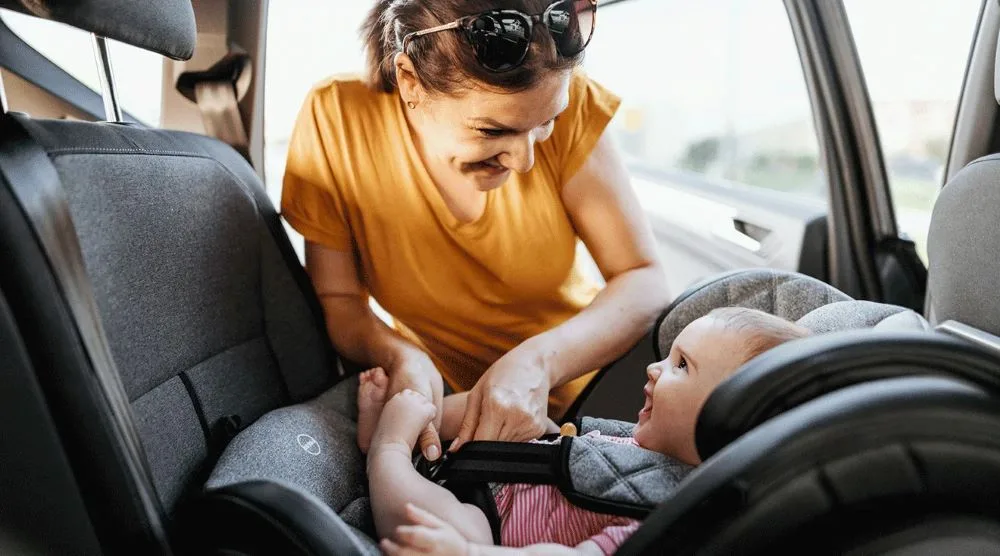The Ultimate Guide to Child Car Seats and Safety
Learn how to choose, install, and maintain child car seats to ensure the safety of your little ones on every journey.
Why Car Seats Matter
Types of Car Seats
Installation and Maintenance
Startling Statistics
The Importance of Child Car Seat Safety
Did you know that car accidents are the leading cause of death for children under 13? Properly installed car seats can reduce the risk of fatal injury by 71% for infants and 54% for toddlers.
Understanding the critical role of car seats is essential for every parent. This guide will help you navigate the complexities of car seat safety, ensuring your child is protected on the road.
Why It Matters
Critical Importance of Car Seat Safety
Ensuring your child is properly secured in a car seat can mean the difference between life and death in the event of an accident. Proper car seat usage reduces the risk of injury and provides peace of mind for parents. This guide aims to educate you on the best practices for selecting, installing, and maintaining car seats, so you can keep your child safe on every trip.
The Goal of This Guide
Welcome to our comprehensive guide on child car seat safety. Our primary objective is to equip parents with the knowledge they need to select, install, and maintain child car seats to ensure the utmost safety for their children.
By understanding the various types of car seats available and the proper installation techniques, parents can significantly reduce the risk of injury during car accidents. This guide aims to provide clear, actionable information to help you make informed decisions about your child’s car seat safety.
The Importance of Car Seats
Why Car Seats Are Crucial
Car seats play a vital role in safeguarding children during car accidents. They are specifically designed to protect the most vulnerable passengers by absorbing impact forces and preventing ejection from the vehicle.
Understanding the basics of child car seat safety is essential for every parent. Properly installed car seats can reduce the risk of fatal injury by up to 71% for infants and 54% for toddlers. This makes them an indispensable part of child safety on the road.
In addition to providing physical protection, car seats also offer peace of mind. Knowing that your child is securely fastened and protected allows you to focus on driving safely, further enhancing overall road safety for everyone.
Legal Requirements
California Car Seat Laws
Infant Car Seats
Understanding Infant Car Seats
Infant car seats are designed specifically for newborns and small babies, typically up to 35 pounds. These seats are rear-facing, providing the best protection for a baby’s head, neck, and spine in the event of a collision. One of the key features of infant car seats is their portability; they often come with a handle for easy carrying and can be clicked into a base that stays in the car, making it convenient for parents on the go.
Pros: Excellent safety for infants, easy to transport, and often compatible with strollers. Cons: Limited lifespan as babies quickly outgrow them, and they can be heavy to carry as the baby grows. Usage scenarios: Ideal for newborns and infants, especially for families who frequently travel by car and need a portable solution.
Convertible Car Seats
Transitioning to Convertible Car Seats
Convertible car seats are designed to grow with your child, transitioning from a rear-facing seat for infants to a forward-facing seat as your child gets older. These seats can accommodate children from birth up to 65 pounds, making them a long-term investment. The main benefit of convertible car seats is their versatility; they eliminate the need to purchase multiple seats as your child grows.
Benefits: Long-term use, cost-effective, and versatile. Drawbacks: Bulkier and heavier than infant car seats, not as portable. Transition: Parents should consider switching to a convertible car seat when their child outgrows the infant car seat, typically around the age of one or when they reach the maximum weight or height limit of the infant seat.
Booster Seats
Booster seats are essential for older children who have outgrown their forward-facing car seats but are not yet tall enough to use a regular seat belt. These seats help position the seat belt correctly over the child’s shoulder and lap, providing better protection in the event of a crash. There are two main types of booster seats: high-back and backless.
High-back boosters offer additional head and neck support, making them ideal for cars without headrests. Backless boosters are more portable and easier to transfer between vehicles. Children should switch to a booster seat when they exceed the height or weight limits of their forward-facing car seat, usually around 4 to 8 years old.
High-back boosters offer additional head and neck support, making them ideal for cars without headrests. Backless boosters are more portable and easier to transfer between vehicles. Children should switch to a booster seat when they exceed the height or weight limits of their forward-facing car seat, usually around 4 to 8 years old.
It’s crucial to ensure that the seat belt fits properly, with the lap belt lying flat across the upper thighs and the shoulder belt crossing the chest and shoulder. Proper use of booster seats significantly enhances safety during car rides.
Age, Weight, and Height Guidelines
Choosing the Right Car Seat for Your Child
Selecting the appropriate car seat for your child is crucial for their safety. The choice should be based on the child’s age, weight, and height. For infants, rear-facing seats are recommended until they reach the maximum weight or height limit specified by the manufacturer. Toddlers should transition to forward-facing seats with a harness once they outgrow their rear-facing seats. Finally, booster seats are essential for older children until they are big enough to use the vehicle’s seat belt properly. Always refer to the car seat’s manual and your vehicle’s owner manual for specific guidelines.
Understanding Safety Ratings
How to Evaluate Car Seat Safety Ratings
Safety ratings are a vital aspect to consider when choosing a car seat. These ratings are often provided by organizations such as the National Highway Traffic Safety Administration (NHTSA) and Consumer Reports. They evaluate car seats based on crash test performance, ease of use, and installation. Look for car seats with high safety ratings and check for any recalls or safety notices. Understanding these ratings can help you make an informed decision and ensure that your child is as safe as possible while traveling.
When reviewing safety ratings, pay attention to the overall score and specific categories such as side-impact protection and ease of installation. A higher overall score generally indicates a safer and more user-friendly car seat. Additionally, consider reading reviews from other parents and experts to get a comprehensive understanding of the car seat’s performance in real-world scenarios.
Key Features to Look For
When selecting a car seat, certain features can significantly enhance safety and convenience. Side-impact protection is crucial as it provides additional safety in the event of a side collision. Look for car seats with energy-absorbing foam and reinforced sidewalls. Easy installation features, such as LATCH (Lower Anchors and Tethers for Children) systems, can help ensure the car seat is installed correctly every time. Adjustability is another important feature; car seats that offer adjustable harnesses and headrests can grow with your child, providing a better fit and increased safety over time.
Additionally, consider car seats with machine-washable covers for easy cleaning, and those that offer multiple recline positions for comfort. Some car seats also come with built-in level indicators to help you achieve the correct installation angle. By prioritizing these features, you can ensure that your child’s car seat is not only safe but also convenient and comfortable to use.
Step-by-Step Guide
How to Install Different Types of Car Seats
Common Mistakes to Avoid
Ensuring Safe Car Seat Installation
Incorrect Angle: Ensure the car seat is installed at the correct angle to prevent head slumping, which can obstruct breathing.
Loose Installation: A car seat should not move more than an inch side-to-side or front-to-back when installed correctly.
Avoiding Installation Errors
Maintenance Tips
Keeping Your Car Seat Safe and Clean
Regular Cleaning: Use mild soap and water to clean the car seat fabric and harness. Avoid harsh chemicals that can degrade materials.
Check for Wear and Tear: Regularly inspect the car seat for any signs of damage or wear, especially on the harness and buckles.
Common Questions About Child Car Seats
When should I move my child to the next type of car seat?
Children should transition to the next type of car seat based on their age, weight, and height. Always refer to the car seat manufacturer’s guidelines and local laws to ensure your child’s safety.
How can I tell if my car seat is installed correctly?
Ensure the car seat is tightly secured and doesn’t move more than an inch in any direction. Follow the manufacturer’s installation instructions and consider having it checked by a certified car seat technician.
Can I use a second-hand car seat?
Using a second-hand car seat is generally not recommended unless you know its full history. Ensure it has not been involved in an accident, is not expired, and has all its parts and instructions.
What are the common mistakes to avoid when installing a car seat?
Common mistakes include not securing the car seat tightly enough, using the wrong belt path, and not adjusting the harness correctly. Always double-check the installation and consult a professional if needed.
How do I maintain and clean my child’s car seat?
Regularly check for wear and tear, clean the seat according to the manufacturer’s instructions, and ensure all parts are functioning properly. Avoid using harsh chemicals that could damage the seat.
Key Takeaways
The Ultimate Guide to Child Car Seats and Safety
Child car seat safety is paramount for every parent. This guide provides comprehensive information on selecting, installing, and maintaining car seats to ensure your child’s safety. Understanding the different types of car seats, legal requirements, and proper installation techniques can significantly reduce the risk of injury in the event of an accident.
By following the guidelines and tips provided, you can make informed decisions about the best car seat for your child’s age, weight, and height. Remember, the right car seat can save lives, so always prioritize safety over convenience.
Stay Informed and Share the Knowledge
Help us spread the word about child car seat safety. Share this guide with other parents and caregivers to ensure every child is protected. For more information or assistance with car seats and insurance needs, contact Cal Patriot Insurance Services today. Your child’s safety is our top priority.

